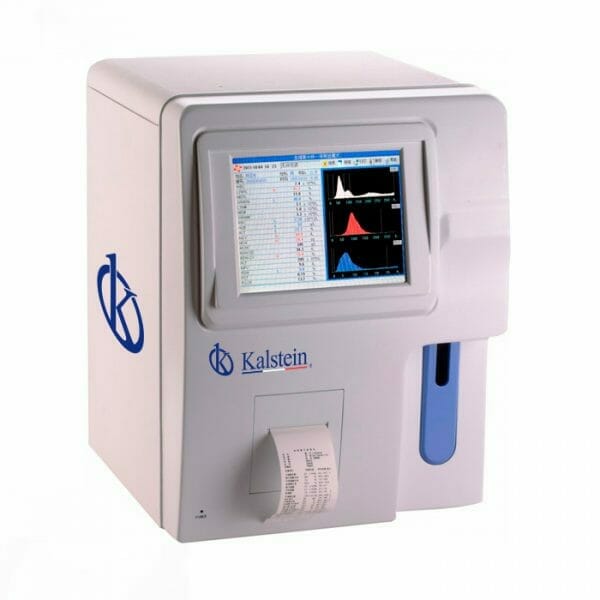Hematological analyzers are used to determine the general state of health of the patients; manifest, determine or control a wide variety of diseases that can affect blood cells, such as anemia, infections, inflammations, bleeding disorders or cancer. They are made from a sample of blood from a vein or from a fingerstick or heel prick (in newborns).
The hematology of circulating cells in the blood, including red blood cells, white blood cells, and platelets, is studied using the analyzers in the laboratory units. It also evaluates general health and detects a variety of diseases and conditions, including infections, anemia, and leukemia.
Functions of hematological analyzers
Hematology analyzers are created for complete blood stones, erythrocyte sedimentation rates, and coagulation tests.
Blood samples are taken mainly to quantify, classify, and draw the distribution of cells, using electronic and optical techniques.
In this sense, hematological study is used as screening to determine the health status of people. Some of its uses are described below:
- General examination of various disorders and disorders.
- Diagnose anemia, infections, inflammations, bleeding disorders or leukemias, among others.
- Monitor pathologies and treatment effectiveness after diagnosis.
- Record treatments that are potentially harmful to blood cells such as chemotherapy or radiation therapy.
Hematology is commonly done in patients whose symptoms affect health, such as fatigue, weakness, infection, inflammation, bruising or bleeding, so checking the treating physician, request a blood count to determine its severity.
Advantages and disadvantages of hematological analysers
The diagnosis of blood diseases is studied by these devices and determines the state of the disease, yielding negative or positive results, depending on the situation of the patient.
Therefore there are advantages and disadvantages, such as:
Advantages
- Speed thus minimizes the need for manual intervention. Similarly, the level of accuracy is increased and the number of errors is limited.
- The accuracy of the results and therefore better cell differentiation.
- The variability is established by the diversity of measurement parameters.
Disadvantages
- Human error is one of the major stumbling blocks of manual counting.
- The cost, in the acquisition of a hematology analyser, which requires a significant investment.
- The size influences, as most of these devices are relatively bulky.
However, despite the physical disadvantages of the team, it is important to note that hematological analyzers are the cornerstone for the prevention of future diseases. Depending on the purpose of the trial, several additional or follow-up trials may be necessary for further investigation.
Diseases detected by hematology analyzers
- Anemia of various aetiologies.
- Autoimmune diseases.
- Bone marrow disorders Common.
- Dehydration.
- Infections.
- Swelling.
- Abnormal hemoglobin.
- Leukemia.
- Low platelets.
- Lymphoma.
- Myeloproliferative disorders
- Myelodysplastic syndrome.
- Sickle cell anemia.
- Thalassaemia.
- Nutritional deficiencies (e.g. iron, B12 or folic acid).
- Cancer that has spread to the bone marrow.
Kalstein brand hematology analyzers
At Kalstein, we are equipped with the broadest technology in trained laboratory equipment, to meet all the demands of our customers. In this case, we offer you the hematology analyzers of the YR models, with general and very attractive features, such as, differentiation of 3 parts of WBC, 23 parameters, up to 35 test samples per hour, electrical resistance for counting and SFT method of hemoglobin. Low sample consumption: venous 9.8 ul, pre-diluted 20 ul for two tests once. 8.4″ TFT color, Windows interface, all test parameters are displayed simultaneously. Windows operating system graphics buttons Mouse and keyboard operation. Dilution, mixing, rinsing and automatic clogging removal. Automatic cleaning of the sampling probe (inside and outside). Large storage capacity: up to 10,000 samples + 3 histograms. Internal heat sensitive printer or external printer. RS232 interface, PC connection.
We are manufacturers and we have the best advice, so that your purchase is the ideal and at excellent prices. Enjoy our catalog in HERE For more information, visit our page HERE


